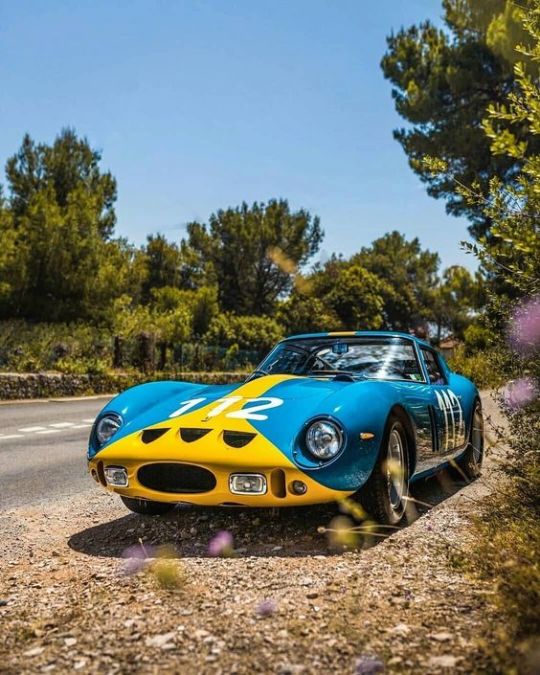#Scaglietti
Text


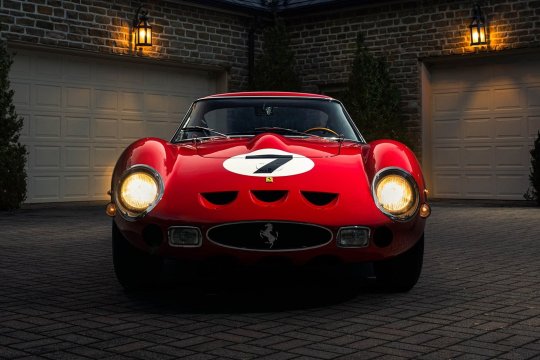
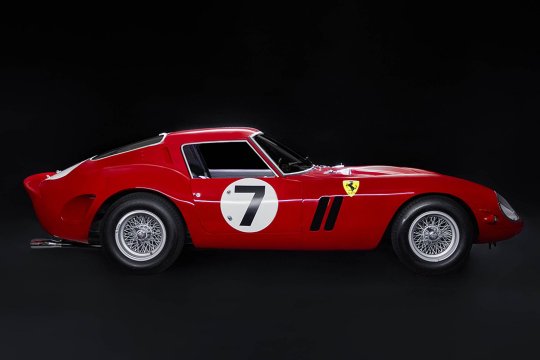
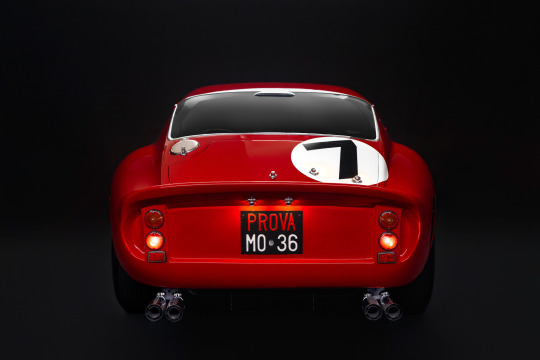
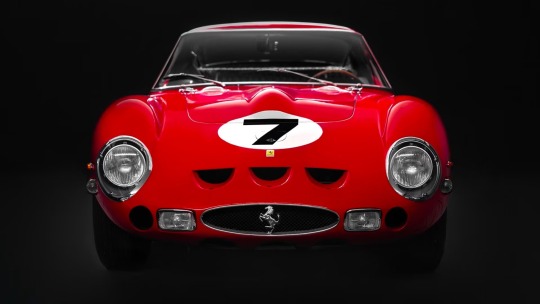


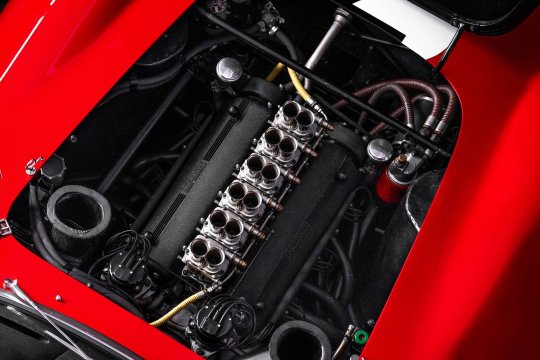
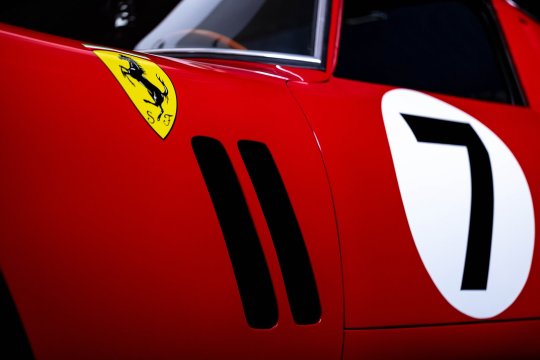
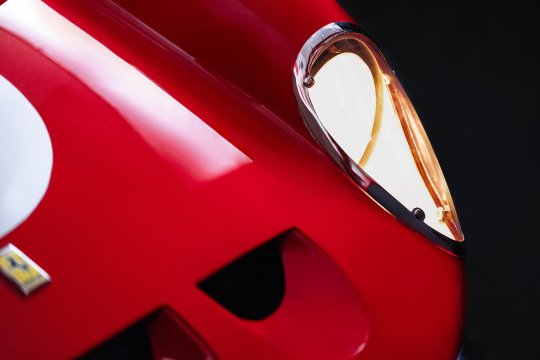

1962 Ferrari 330 LM / 250 GTO by Scaglietti
With just 36 in existence, the 250 GTO is a coveted motorcar. However, this example is even more special, thanks to its 4.0-liter engine.
It's the only example initially fitted with the larger displacement motor, unlike the 3.0-liter found in the other cars. However, the original engine made way for a 3.0-liter Colombo V12, which remains under the hood today.
This car placed second overall in the 1962 Nurburgring 1000km race, and competed in the 24 Hours of Le Mans in the same year, surviving 56 laps before a crash ended the car's race.
Courtesy: RM Sotheby’s
#art#design#luxury cars#luxury lifestyle#supercars#sport cars#luxurycars#luxurylifestyle#supercar#luxurycar#ferrari#1962#ferrari 330LM/250GTO#scaglietti#sportcars#sportcar#nurburgring#racecars#racecar#250GTO#collector's#rmsothebys
845 notes
·
View notes
Text


Ferrari 275 GTB by Scaglietti 1964. - source Cars & Motorbikes Stars of the Golden era.
304 notes
·
View notes
Text



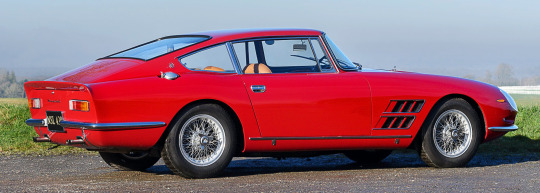
Maserati 3500 GT, 1964, by Pierino Scalco/Scaglietti. A one-off using a Scaglietti-built nose and other parts adapted for the Maserati. The fastback roof and rear of the car were sculpted by Scalco to complement the front end design.
213 notes
·
View notes
Text

Ferrari 335s Scaglietti
137 notes
·
View notes
Photo


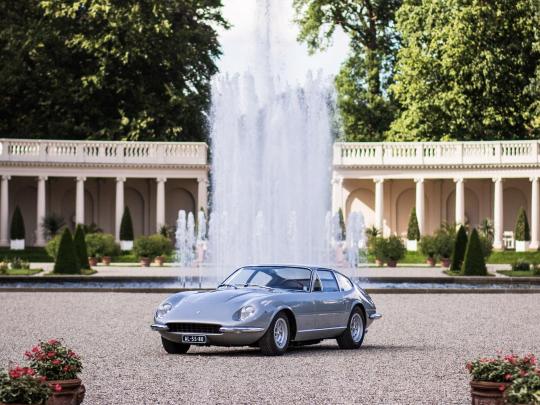



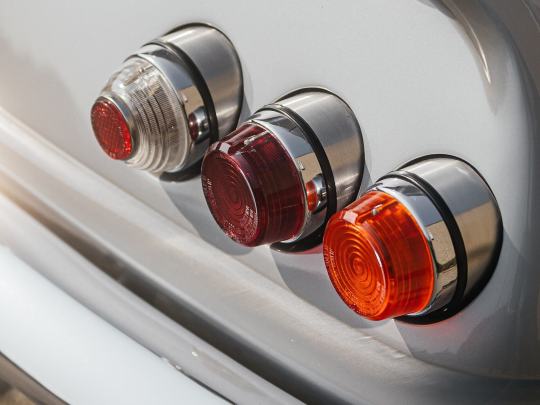
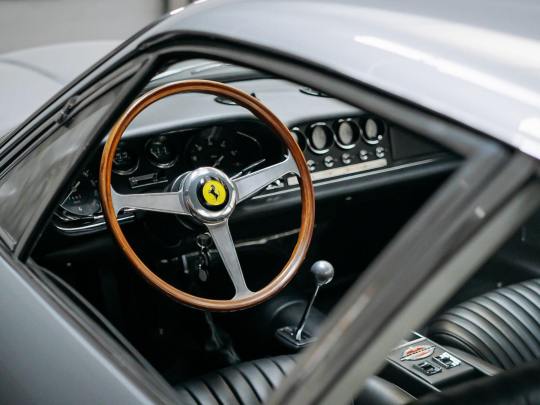


Ferrari 365 GTB/4 Daytona (very first) Prototype by Scaglietti
In the late 1960s, it seemed as if the performance car world was at a crossroads. With the introduction of Lamborghini’s P400 Miura and its revolutionary mid-engined design, some thought this design would be the future for the upper echelons of performance cars, and that front-engined cars would begin to fade from popularity.
Spurred on by the success of the Miura, Ferrari knew that the replacement of the 275 GTB/4 needed to be something spectacular and new in order to take the fight to Lamborghini. Rather than move to a mid-engined format, it was decided that the front-engined V-12 platform would remain, alongside coachwork penned by Pininfarina. Quite simply, if it works for you and your clients, why go about reinventing the wheel? After all, this is what Ferrari had built their reputation on, and there was no one better at building twelve-cylinder, front-engined GT cars than Ferrari. They were not to be outdone by this team of renegades at Lamborghini, headquartered just down the road from Maranello!
Chassis number 10287 was the genesis of that new model of Ferraris and the Scuderia’s fighting back against the Lamborghini and the Miura. At first glance to the casual observer, the car offered here seems to tread the line between a 275 GTB/4 and a 365 GTB/4 Daytona. Visual cues to both can be seen and some design elements seem to have blended together, but this car is far more than a design study to determine Ferrari’s future. A total of six 365 GTB/4 prototypes would be built, but this example, as the first, remains the most recognizable, the most unique, the most significant, and is undoubtedly the most desirable.
Chassis number 10287 is that of a Tipo 596 chassis, the same type which was used for the 275 GTB/4, made of tubular steel and a wheelbase measuring 2,400 mm (a wheelbase length shared by both 275 GTB/4 and 365 GTB/4). At its heart is a completely unique Lampredi engine, one that would not be seen in any other Ferrari road car at the time. Designated Tipo 243 internally, it is fitted with dry sump, three-valve heads rather than the usual four valves per cylinder, dual ignition, twin spark plugs per cylinder, and is topped with six Weber 40 DCN18 carburetors. The block itself is based on that of a 330 GT but has been bored out to 4,380 cc. What is worth noting about this completely unique and radically redesigned engine is that it bears similarities to the engines found in the 330 P4 prototype racers, the race car that won numerous races and earned its place in the history books after their memorable 1-2 finish with a 412 P coming in third at the 1967 24 Hours of Daytona. These racing cars also have double inlet valves with one exhaust valve per cylinder.
Aesthetically, the design in front of the windshield was similar to that of a 275 GTB/4, albeit with a slightly stretched and flattened nose, still boasting covered headlights and a bonnet with a central bulge similar to a 275 GTB/4. The shape of the tail section of the bodywork is instantly recognizable to anyone familiar with a Daytona, utilizing 275 GTB/4 boot hinges and a full-width rear chrome bumper. Chassis number 10287's side profile is most evocative of the production Daytona, and allegedly what Enzo Ferrari loved most about this particular prototype, featuring a near identical rear ¾ section and roofline. Looking at the nose and bonnet, similarities can be seen between this and Jaguar’s E-Type.
Once completed in early 1967, 10287 saw extensive factory testing at the Modena Autodrome over the course of that year. It was first registered on May 8, 1968, wearing Italian number plates ‘Roma B 85391’ through the official Ferrari dealer in Rome, Motor S.a.s. di Carla Allegretti e C, noting a sales price of 8,000,000 Italian Lira. It is interesting to note that, at the time, this was similar in price to a new 275 GTB/4, but by that time, the production version of the 365 GTB/4 Daytona had yet to be introduced, this being about five months before the 1968 Paris Auto Salon.
#Ferrari 365 GTB/4 Daytona#Prototype#Scaglietti#lamborghini p400 miura#275 GTB/4#Pininfarina#v12#Lampredi#Enzo Ferrari#Paris Auto Salon#24 Hours of Daytona
127 notes
·
View notes
Text
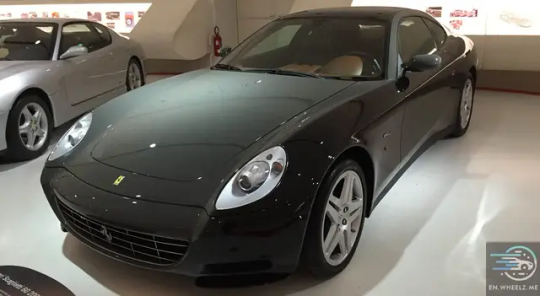
10 notes
·
View notes
Text
The ‘Modena Monster’: The 1955 Ferrari 410 Sports Spider by Scaglietti - a storied history
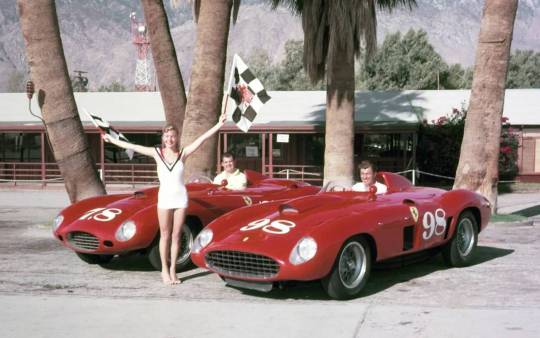
Mr. Ferrari told me this was the best Ferrari he ever built.
- Carroll Shelby on the 1955 Ferrari 410 Sport Spider by Scaglietti.
Why do so many of us find sports cars irresistible? Of course, it would be impossible to isolate exactly what it is about a well-designed sports car that engenders such attachment, but there are some factors that would logically contribute to the commonly seen love affair between men (and yes, women too) and their sports cars.
It seems as if much of the attraction is grounded in symbolism. Racing cars have long been portrayed as sources of freedom. Talented drivers are left unencumbered by the limitations of our lives driving pedestrian automobiles. They are seen as having a uniquely freedom to test their limits against nature. In such circumstances the driver is not boxed in like others. He can tackle any unencumbered road using all his God given skills while being completely open to the elements of chance and fortune. The source of that freedom from the adrenaline rush is the need for speed.
But speed is tethered to design and engineering innovation. We live in a world that worships at the altar of technological advances. The sports car is a moving amalgamation of technical expertise. Racing cars are a bundling of technological miracles. From aerodynamic styling to compact yet powerful engines, they represent the cutting edge of technological design. In a society entranced by technology and innovation, the sports car has an iconic appeal that is difficult to equal.
For me though, it’s stories behind the drivers and the feats of engineering design that make me an unabashed petrol head. It’s not just appreciating the feats done in the car by magnificent drivers of their age. But recognising each car has a story too. Every car has a storied history.
And this is the story of one of my favourite racing cars in motor sports history.
The 1955 Ferrari 410 Sport Spider by Scaglietti has the reputation as an incredible and rare sports car that was driven by some very famous racing figures. In addition to Carroll Shelby, who would later join Ford in beating Ferrari at the 24 Hours of Le Mans, the car was driven by the legendary Juan Manuel Fangio and by Phil Hill, Formula 1 champions both, as well as Enzo Ferrari himself.
The 1955 Ferrari 410 Sport Spider by Scaglietti was birthed by Enzo Ferrari and Sergio Scalietti.
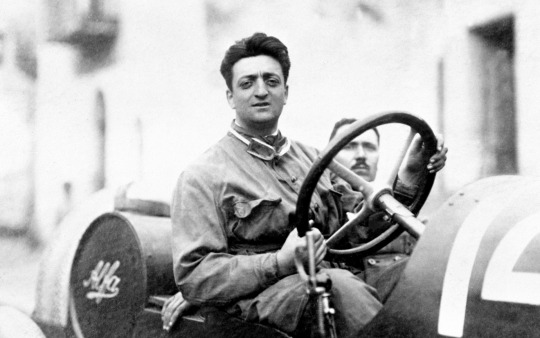
At a time when series car making was still in its infancy at his company, Enzo Ferrari would manufacture only the rolling chassis and drivetrain. For the bodies, Enzo employed several different coach-builders to “clothe” his machines. Performance was Enzo’s utmost concern and thus, styling came second. Still, he was acutely aware of how styling impacted peoples’ perception of his company and the cars that bore his name. Luckily Ferrari’s victories on racetracks caused the industry’s bespoke coach-building companies to want to work with the firm, and show what they could do on the Ferrari chassis. One of these firms was Carrozzeria Scaglietti.
Sergio Scaglietti, got his start working on Scuderia Ferrari’s Alfa Romeos (then Alfa’s racing arm) before World War II. After the war he opened a repair shop in Maranello, not far from the Ferrari factory, where he primarily repaired the bodywork of damaged race cars for gentleman racers. When one such racer brought his damaged race car to Sergio’s workshop, the quality of the repairs and re-bodying caught Enzo’s eye, and by 1955 Sergio was put in charge of bodying the majority of Ferrari’s competition cars.
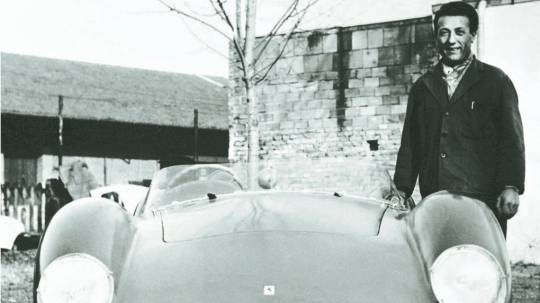
Additionally, Sergio secured a loan from Enzo himself to start his own coach-building film, the aforementioned Carrozzeria Scaglietti. This was quite an honour because at the time there were quite a few established coach-builders who already worked with Ferrari including Bertone, Zagato, Vignale, Touring, and Pininfarina. Sergio won Enzo’s trust not only because of his skills with metal, but also because of his relationship with, and support for, Enzo’s son, Dino, who died in 1956.
With Scaglietti now an officially sanctioned Ferrari coach builder, he received chassis’s directly from the Ferrari factory for coachwork. By his own admission, he designed all his shapes “by [his] eyes alone,” letting his own “good taste, understanding of aerodynamics, style, and function” dictate his designs. He rarely drew out his designs in advance, instead preferring to shape the body directly over the chassis.
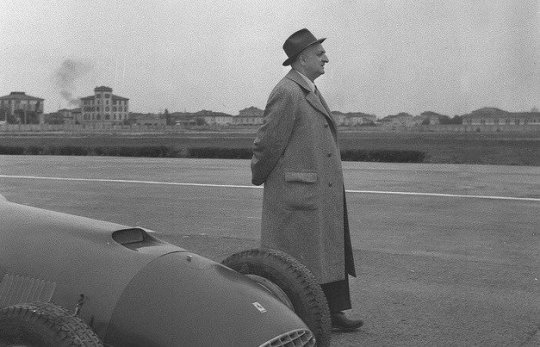
Enzo Ferrari was a man passionate about motorsport and high performance cars. He understood that one of the secrets to success for his young company was to obtain victories in high profile competition events, and an FIA World Sportscar Championship win would be a great feather in Ferrari’s cap - something that would make the motorsport world, and the sports car buying public, to take notice.
The final event for the 1955 season was to be the Carrera Panamericana. It was a gruelling five-day rally that traversed the Mexican wilderness en route to the border near El Paso, Texas. Ferrari had experienced overwhelming success on nearly every circuit in sports car racing, with the one possible exception being the notoriously dangerous Carrera Panamericana. Not for nothing it was known as the most dangerous motor race in the world with accident deaths being the norm each year among drivers and spectators. It’s fearsome reputation was such that it would bring extra kudos to a sports car maker whose car successfully completed the course and won the event.
Previously, in 1952 several privateer Ferraris were entered, including three of Maranello’s latest sports-racers, Vignale-bodied berlinettas built upon the Lampredi 340 racing engine platform. Subsequently known as the 340 Mexicos, these cars showed promise as Luigi Chinetti finished 3rd overall.
But a year later in 1953, the upgraded 340 MM entries could not hold pace with Lancia’s dominating D24 race cars, despite Umberto Maglioli’s commanding 10-minute lead during the race’s final leg. In 1954, Maglioli rumbled to victory in Erwin Goldschmitt’s 375 Plus. Ferrari had failed again. Riding too high to handle safely, these extremely powerful cars clearly required some chassis development to remain in control on the bumpy and unpredictable surfaces of the Carrera course.
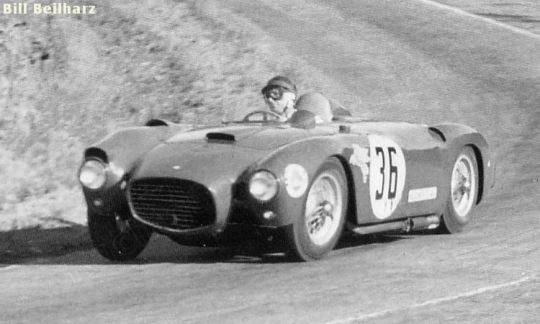
In the years up to 1955 Ferrari campaigned in the event without success and so they went back to the drawing board, literally, and designed a car purpose built for that event. It was designated the type 519/C and the chassis numbers all ended with the initials “CM” which stood for “Carrera Messicana” for the event they were created for.
This new car was the 410 Sport and the second two of the four to be made were fitted with a revised version of the Lampredi V12 engine with a capacity of 4,961 cc. This engine was given dual spark plugs per cylinder (i.e. twenty four in total), a quadruple distributor arrangement, combined with magneto ignition in the first car 0596 CM and coil ignition in the second car 0598 CM.
To feed in a healthy dose of fuel/air mix into those twelve thirsty cylinders three twin-choke Weber 46 DCF carburetors were bolted on in the middle of the “V.”
The suspension system was designed to provide the best handling and durability the engineers could achieve, at the front a fully independent system with upper and lower wishbones, and at the rear a transverse elliptic spring built into a De Dion design.
The roads in Mexico were rough and the suspension was going to need to soak up some exceeding nastiness while keeping the car on course and providing the best ride possible to keep drivers from fatigue.
The chassis was a tubular space-frame set for low riding for optimum stability and, they hoped, for survivability over the destructive conditions of the race.
The power of the dual ignition engines was slightly short of 400 hp, which was very high for cars of the period, and it would be this cutting edge level of power that would prove to be the car’s Achilles heel, paradoxical though that might sound.

Even as Ferrari’s engineers were designing and building these four the notorious 1954 Le Mans crash took place. This saw a very lightly constructed Mercedes-Benz 300 SLR crash at the end of Mulsanne Straight. With the car traveling at top speed it broke apart in a collision and sent pieces through the spectators at that location, killing 83 spectators and the driver, and injuring about 180 people.
This caused the entire motor-sport fraternity to re-assess their participation in motorsport events, and the organisers cancelled the 1955 Carrera Panamericana. So the two cars Ferrari were working on suddenly did not have the race they were created for to compete in.
As a result, Maranello repositioned the two double ignition 410 S to participate in the 1956 World Sportscar Championship racing season, making their debut at the season-commencing 1000 KM of Buenos Aires in January 1956.
The pair of 24-spark cars, chassis numbers 0596 CM and 0598 CM, were respectively driven by the paired teams of Peter Collins and Luigi Musso, and Juan Manual Fangio and Eugenio Castellotti. The Argentine great, Juan Manuel Fangio preferred the pedals of his cars to be laid out in the old “C.A.B” layout. So from left to right the pedals were clutch, accelerator, and brake. This arrangement was not uncommon during the 1950s and 1960s. Some drivers, such as Fangio, preferred this arrangement for heel and toe gear-changing.
All eyes were on the local hero from Argentina, with the press focusing much of their attention on Fangio and his 410 Sport. But the two Ferrari’s faced stiff competition, especially in the person of British driver Stirling Moss who was so noted for his fast driving that he created the famous line uttered by British traffic policemen when they pulled you over for speeding “Who do you think you are – Stirling Moss?” Moss was driving a Maserati 300S - an extremely fast car - as long as it didn’t suffer a mechanical failure (something they tended to be prone to).
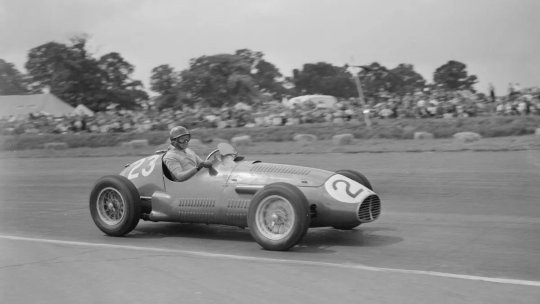
The pair of 24-spark cars, chassis numbers 0596 CM and 0598 CM, were respectively driven by the teams of Peter Collins and Luigi Musso, and Juan Manual Fangio and Eugenio Castellotti. Fangio had requested a special modification to 0598 CM that moved the accelerator from its normal position to one between the brake pedal and the clutch. Disaster hit the Ferrari 0598CM team early when Castellotti experienced a tire issue forcing the car into the pits for repairs. Fangio jumped back in 0598 CM with a significant distance to overcome and furiously chased down Stirling Moss in the leading Maserati 300S.
After Castellotti experienced a tire issue forcing the car into the pits for repairs, Fangio jumped back in 0598 CM with a significant distance to overcome and furiously chased down Stirling Moss in the leading Maserati 300S. Moss was happily storming ahead very comfortably from the rest of the chasing pack. But Moss didn’t count on Fangio’s drive to win. Fangio was after all driving in front of a home crowd of fellow South Americans and he really wanted to win – so he drove using all his skills, talent, and ability and he closed the gap with some dramatic driving until he had Moss’s Maserati in his sights.
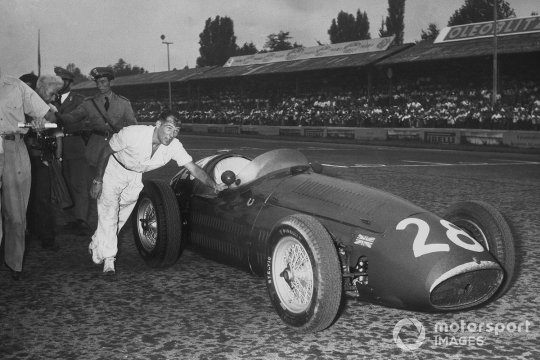
And it was at that point that Murphy’s rule reared its ugly head - “if anything can go wrong, it will, and at the worst possible moment”. The other Ferrari 0596 CM of Collins and Musso lasted until lap 61 until the transaxle failed. Fangio’s car suffered a similar fate. In Fangio’s car the differential gave way from the punishment enacted by the feverish pace and raw power of the type 126/C engine on the 89th lap. The transaxle failed bringing Fangio’s wild drive to a heart wrenching end. 400 hp had proved the car’s Achilles heel - the engine was too much for the transmission.
The Brazilians mourned Fangio’s elimination from the race, although driving so hard that the car collapses under the strain is a pretty heroic way to withdraw. However heroic the effort was, Ferrari and his entire team including the drivers were devastated.
Ferrari sent both cars back to the factory for a refit. It was this point the fate of the Ferrari 410 S would take a momentous turn of fortune in 1956.
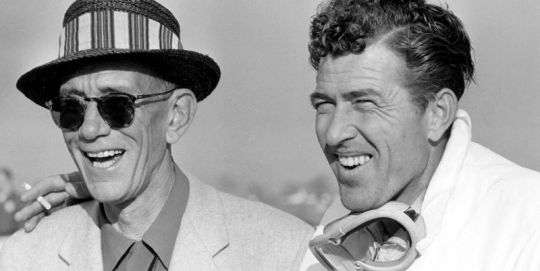
Racing team owner John Edgar had taken note of the two Ferrari 410 S fitted with the dual spark plugs and quad distributors and had set his sights on getting one. John Edgar had waited in the wings for his opportunity at 0598 CM, anxious to obtain the golden chariot that might deliver his own racing championship. Edgar had also taken note of a young American driver who had given up his life as a chicken farmer to take up motor racing. That ex-chicken farmer was of course none other than the future legendary driver, Carroll Shelby, and John Edgar wanted to recruit him to his racing team and put him in the driver’s seat of a 400 hp 410 S.
Not only John Edgar was able to purchase 0598 CM, the Fangio/Castellotti car, but he was also able to lure Carroll Shelby away from Scuderia Parravano with the promise of turning him loose in the Ferrari. Shelby loved speed, so much that despite his heart condition he did as much high quality motor racing as he could get: even though he had to keep a nitro glycerin pill under his tongue to help with his heart condition. It would be this heart condition would ultimately force him to stop racing – but Shelby was determined to get the maximum enjoyment in the sport before that happened.

While awaiting the delivery of 0598 CM, Shelby garnered a number of wins for Team Edgar at smaller venues, winning the “Race to the Clouds” at Mount Washington, New Hampshire, the Laurel Run Hillclimb, the Brynfan Tyddyn, and the Breakneck hillclimb outside of Cumberland, Maryland. But the central attraction was scheduled to arrive by airfreight in August 1956 at San Francisco, where the tireless team mechanic and hauler Joe Landaker picked up the 410 Sport and transported it to Bremerton, Washington for the 1956 Seafair event.
In his inaugural race in 0598 CM Shelby took the checkered flag, setting the stage for many more victories to come. The Shelby/Ferrari 410 S combination proved to be formidable. The 1956 Washington Seafair event and followed it up with a number of impressive victories. Shelby went on to a number of victories in the 410 S that year in 1956. With Shelby’s victories came telegrams sent to John Edgar by none other than Enzo Ferrari, who seemingly took an active interest in Shelby’s continued success behind the wheel of 0598 CM, congratulating him on more than one occasion.
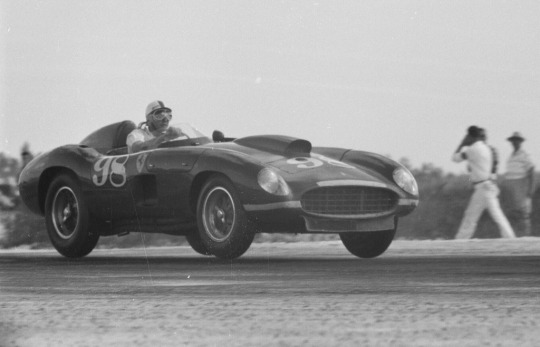
At the season-concluding SCCA finale at Palm Springs in early November, Edgar entered six cars, hotly pursuing the elusive championship. The 410 Sport had been dubbed “Edgar’s Modena Monster” by the press, and with Shelby at the wheel, there seemed to be no race it could not win.
Shelby won the pole position during Saturday’s preliminary race at Palm Springs, facing a challenging field that included Phil Hill in a Ferrari 857 Sport, fresh from his rookie year with the Ferrari factory team (one that brought the FIA’s 1956 World Sports car Championship to Maranello). From a 3 PM standing start, Bill Murphy jumped out to the lead in his Buick-powered Kurtis, though he was quickly overtaken by Shelby and Hill. Through the corners, Hill’s nimble 857 S would get the upper hand as Shelby braked hard, then on the straightaways Carroll would pour on the 4.9-litre power to retake the lead.
This pattern repeated time and again throughout the race, with Shelby managing to finish first at each lap’s conclusion. In the final lap the two cars battled side-by-side until Shelby roared to victory, just a half-second ahead of Hill.

Shelby later quipped that with his power advantage he could have taken a bigger lead over Hill at any time during the race, but was having too much fun enjoying their epic duel. The captivating Texan had won the race, capping a season in which he won 40 different events, including 18 feature races. Four months later his infectious grinning mug graced the cover of Sports Illustrated magazine, which pronounced him the US Sports Car Driver of the Year for 1956 - his celebrity had transcended to a greater stage.
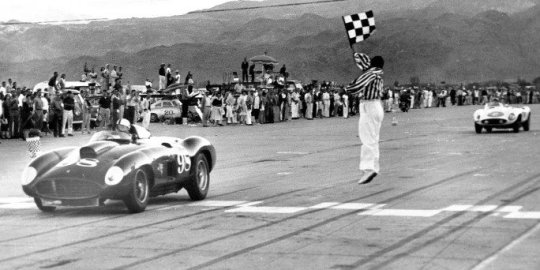
As the 1957 season dawned, John Edgar continued to pin his hopes on Shelby in the 410 Sport, and though Carroll failed to qualify at a rain-soaked Pomona race in January, he achieved two wins in February at New Smyrna Beach, Florida. The first Cuban Grand Prix was held in 1957 along Havana's waterfront, the Malecon, and by all accounts it had been a huge success. Juan Manuel Fangio, whose tally of five world championships has been surpassed in the decades since by just Lewis Hamilton and Michael Schumacher, was favourite to win.
Shelby’s success though set up an epic duel at the ritzy Gran Premio de Cuba, a 310-mile race of 90 laps through the streets of Havana and along the beachfront Malecón. The Cuban revolution was in full swing, but of course sports car racing should happen regardless of mere revolutions and so the Gran Premio de Cuba was organised with the race to take over the streets of Havana and bring the un-muffled roar of racing engines along the beachfront at Malecón. Filming the race from the perch of his hotel room balcony, John Edgar watched as Shelby’s 410 Sport held off Portago eventually finishing in 2nd place, 60 seconds behind Juan Manuel Fangio’s Maserati 300S.

From this point forward Edgar began to court Maserati, eventually agreeing to a deal in which Shelby would pilot a 450S, Modena’s prodigious new V-8 powered sports-racer. Maserati later struggled to deliver the car, and instead offered a 300S loaner during the interim. As the contract with Maserati specified that Shelby could not drive a Ferrari under any circumstances, Edgar was content to put Phil Hill in 0598 CM for the Hawaii Speed Week in April 1957. Hill shortly left the Edgar fold for good to race for Scuderia Ferrari at Le Mans.
John Edgar had sunk nearly half a million dollars into the construction of the new Riverside International Raceway, and after Shelby was hurt in a crash of one of the Edgar Maseratis, Richie Ginther was pressed into action in the Ferrari 410 Sport at the venue’s September 1957 debut. Richie Ginther was to discover the joys of the “Modena Monster” as 0598 CM had come to be called. And in it he won the first feature race at the Riverside International Raceway. From 5th place in the starting grid Ginther looked ahead at some daunting competition, including Chuck Daigh in a Troutman-Barnes Special, Bob Drake in a Ferrari 375 Plus, and Pete Woods in a Jaguar D-Type. Not to be deterred, Ginther took the lead after 22 laps, and he went on to roar to victory behind the wheel of 0598 CM - winning the first feature race ever run at Riverside as a result.

Ginther had a number of second place victories that year before 1958 arrived and with it a return to Cuba, still in the middle of a revolution. But last time the cigars were good and the enjoyment was fabulous - so what could possibly go wrong?
The 1958 Gran Premio de Cuba was ill-fated in so many ways. Not only was the race eventually stopped because of a on track accident, but Juan Manuel Fangio was kidnapped by Cuban communists and Stirling Moss almost shared the same fate.
Fangio came back to defend his title, and alongside him on the grid was a host of other big names from the era, including Stirling Moss. The drivers approached the non-championship race as any other, and the most famous were accommodated in the luxurious Hotel Lincoln in Central Havana.
On the eve of the grand prix, Fangio walked into the lobby of the hotel on his way to dinner, only to be confronted by a young man in a leather jacket brandishing a pistol.According to reports from the time, the slightly nervous assailant barked: "Fangio, you must come with me. I am a member of the 26th of July revolutionary movement." One of Fangio's friends picked up a paperweight and moved to throw it at the intruder, but the pistol jerked round. "Stay still," the kidnapper said. "If you move, I shoot." And with that Fangio accompanied the young man to a waiting car.

The motive was simple: by capturing the biggest name in motorsport the revolutionaries would show up the government and attract worldwide publicity to their cause. Yet despite the news of the kidnapping spreading across the globe, Batista refused to be outdone and ordered the race to continue as usual while a team of police hunted down the kidnappers.
Meanwhile, Stirling Moss was kept under guard throughout the night, with a watchman knocking on the door every three hours to make sure he was still in his bed. "It was a very disturbing night," he recalled. "Fangio told the rebels, 'You mustn't take Stirling because he's on his honeymoon' - which was a lie of course, but nevertheless was very decent of him."
In an unknown location, Fangio was taking it all in his stride and was being treated to a slap-up meal of steak and potatoes before "sleeping like a blessed one" in a well-furnished apartment. Convinced he was not in danger, he later said he sympathised with his captors' actions."Well, this is one more adventure," he added. "If what the rebels did was in a good cause, then I, as an Argentinean, accept it."
As ordered by Batista, on the morning of the race, the cars were fired up in front of a 150,000-strong crowd, with Maurice Trintignant filling in at Maserati for the missing Fangio. By this time the world champion had been offered a personal apology by Castro's man in Havana, Faustino Perez, and had even been supplied with a radio so he could listen to the action. But Fangio was not in the mood."I became a little sentimental," he said. "I did not want to listen because I felt nostalgic."
It was just as well, as Fangio's sentimental state of mind could have been pushed to the limit had he known what was happening on track.
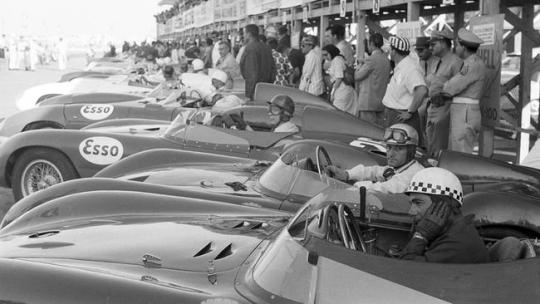
The race got underway as normal without Fangio. It was going to be a close fight even without Fangio there. Masten Gregory drove the ‘Modena Monster’, now called the Edgar 410 Sport, admirably, passing the brilliant Stirling Moss in a Ferrari 335S and building on his lead. But by the time the leaders started their fifth lap, almost every corner of the 3.5-mile circuit was slick with oil and the cars started to run perilously close to the barriers.
At first the organisers suspected a second act of rebel sabotage, but it was later discovered that Roberto Mieres' Porsche had a broken oil line.
On the next lap, disaster struck. Local driver Armando Garcia Cifuentes lost control of his yellow and black Ferrari and went head on into a bunch of spectators lining the circuit. Over 30 people were injured and seven killed as the wreckage took out a makeshift bridge and flew over the crash barriers. Porsche driver Ulf Noriden stopped on track and attempted to help."I couldn't even see the Ferrari," he said. "The bodies were piled all over. I was wading in arms and legs."
After a Ferrari left the track due to an oil spill and went into a crowd of spectators, the race was red flagged with Gregory’s ‘Modena Monster’ in 1st place. Believing he had won the race, Gregory lifted off the throttle. Moss soon flashed past him at full speed. Moss, unaware of the extent of the tragedy, continued racing against Gregory’s Ferrari. A confused Gregory watched in horror as the checkered flag signalled Moss the winner at the finish line. It was one of the most bizarre victories of Moss’ illustrious career.
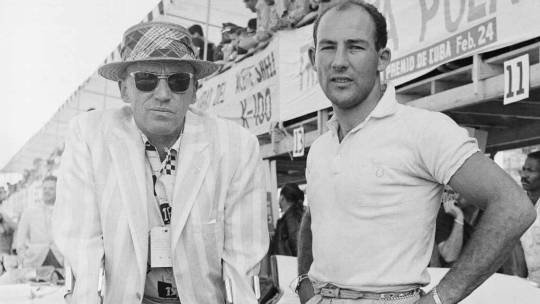
Moss explained soon after to a furious 2nd place-finishing Gregory that red flag rules required the final lap to be completed before determining race results. Moss realised Gregory would have won the race if not for his confusion over this technicality, and in true gentlemanly fashion, he split his race earnings with Masten 50/50.As Stirling Moss was to explain it years later, “"So I said to Masten, 'Look, keep quiet, we'll pool our prize money together and then split it'. And that's exactly what we did, because otherwise it would have gone to the organisers or whoever to decide and it would be years before we got the money, if we got it at all. So officially I was the winner. The truth was either of us could have won it, but what the hell, it didn't matter. Why have an argument about it? Especially with everything else that happened that weekend."
But in the bigger picture it meant that Jack Edgar and the Ferrari Modena Monster were denied sweet victory in the 1958 Gran Premio de Cuba.

For Carroll Shelby the sun was rapidly setting on his racing career.
In 1958, Carroll Shelby demanded to take one last drive in his trusted 0598 CM after the Maserati 450S was sidelined due to mechanical issues prior to the Palm Springs main event in April of 1958, breaking the Maserati contract requirements in the process. Back in the hands of Shelby, the 410 Sport responded commendably, finishing 2nd overall. It was to be Shelby’s last race in 0598 CM – a good finale for his man and machine team.

For Carroll Shelby loved 0598 CM as the best Ferrari he’d ever driven - and he’d had the opportunity to drive it in motor racing in the 1950s which he regarded as a golden age of motorsport by many. Reflecting on his time with Edgar and the 410 Sport Spider, Carroll Shelby would later tell John Edgar’s motor racing journalist son, William Edgar, “Racing in the 1950s was really and truly some of the best times of my life, and it’ll never be replaced. It was an era that’s gone and won’t ever be back.”
1959 signalled the last year of competition for John Edgar, as financial pressures increased and resulting sponsorship concerns began to cloud the landscape. Edgar made his last-gasp attempts to win the USAC Road Racing Championship but failed. It was the sign to pack up and leave the sport with some level of pride and satisfaction at his team’s racing achievements.

Following its stellar racing career, John Edgar sold 0598 CM to Luigi Chinetti in 1960. The car was pulled out of retirement and prepared for the 1963 Daytona Continental 3 Hours for NART driver “Fireball” Roberts. Racing regulations, however, had changed since the last time 0598 CM took the track. The rules now stated that cars were required to have a fixed roof, which necessitated the fashioning of a crude hardtop so 0598 CM could compete. After practice laps proved the improvised hardtop was slowing the car too significantly to qualify, 0598 CM went back into retirement.
Chinetti hung onto the 410 Sport for over two decades until he sold it to private collector. From there it passed through a few private owners.
During its illustrious history, Maranello has built several very significant sports-racers that started life as Scuderia team cars and later became legendary in American privateer circles, but very few of these can compare to 0598 CM. As the car that propelled Carroll Shelby to national attention, and the most successful racer of the respected John Edgar team, this 410 Sport may be regarded as nothing short of a legend. It is indubitably rare, being one of just two factory-campaigned examples that were fitted with the more powerful twin-plug-per-cylinder version of the large-displacement 4.9-litre Lampredi long-block V-12.

Driven by a who’s who of the era’s greatest racing drivers, including Juan Manuel Fangio, Eugenio Castellotti, Carroll Shelby, Phil Hill, Richie Ginther, Masten Gregory, Joakim Bonnier, Bruce Kessler, Jim Rathmann, and Chuck Daigh, 0598 CM is without exaggeration one of the most important and colorful Ferraris to compete in racing during the 1950s.
The Ferrari 410 S 0598 CM may have been retired from active competition for several decades but it had enjoyed a pampered retirement over the years since it earned itself the legendary nickname, the ‘Modena Monster.’
As a postscript, in August 2022 the Ferrari 410 S 0598 CM, long forgotten by the public, but not by petrol heads and racing fans, came out into the public glare again. The ‘Modena Monster’ was put up for an auction sale by RM Sotheby’s in California. It was sold for around $22 million.

While the memories of the incredible World Sportscar Championship have gradually begun to fade, still-salient names like Fangio, Moss, Bandini, and Shelby provide a tangible link to the past. What makes those links stronger are these magnificent cars themselves that will always carry the memories of these iconic drivers in their engines and coach work design from the leading carrozzerie of Turin and Milan.
As one of a select few Ferrari models with coachwork both designed and built by Sergio Scaglietti and the iconic drivers who had driven her, the Scaglietti-built spider was a unique, powerful, and complex character that cannot be copied. As such its achievements will always have a place in motorsports lore amongst racing fans and petrol heads.
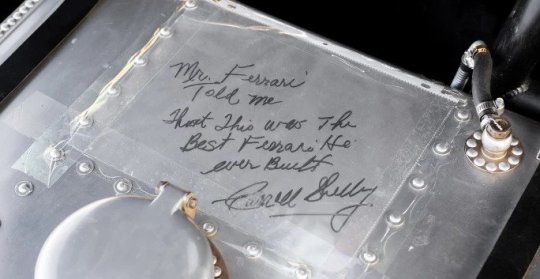
Six years before his death in 2012, Shelby was reunited with 0598 CM at the Fabulous Fifties Concours in Gardena, California. It was there that the iconic American driver added an unforgettable inscription to its 195-litre fuel tank: “Mr. Ferrari told me that this was the best Ferrari he ever built.”
Perhaps no higher praise could be envisioned for 0598 CM.
#ferrari#enzo ferrari#quote#maranello#sergio scaglietti#scaglietti#italian#sports car#racing#motorsports#ferrari 0598 CM#ferrari 410 sports#ferrari sports spider#john edgar#carroll shelby#juan manuel fangio#stirling moss#grand prix#formula one#speed#modena monster#design#engine#motor racing history#essay
80 notes
·
View notes
Text

1950s Scaglietti Corvette
161 notes
·
View notes
Text
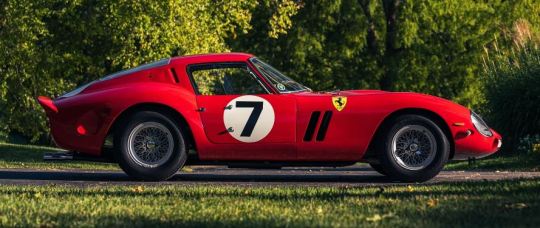


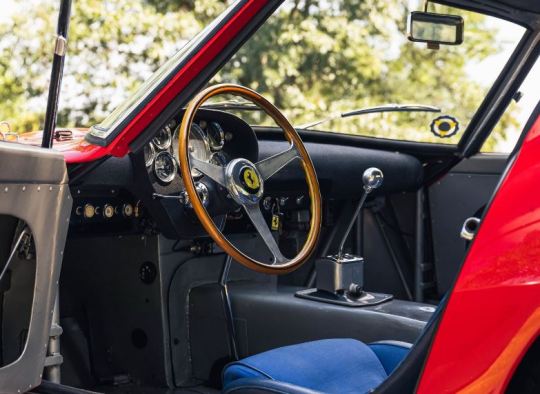
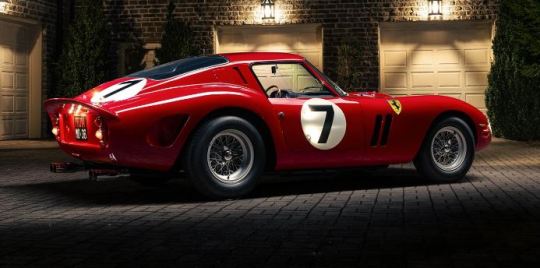
...and it sells for...$51,705,000
https://rmsothebys.com/en/auctions/gt23/the-one---1962-ferrari-gto/lots/r0001-1962-ferrari-330-lm-250-gto-by-scaglietti/1392907
4 notes
·
View notes
Text

Interim V12 SilhouetteHistory Single
Single silhouette of 1959 Ferrari 250 GT Berlinetta Interim.
Home | Posters | Special Tees | Facebook | Instagram
#silhouettehistory#ferrari#ferrari 250 gt#ferrari 250 gt interim#ferrari 250 gt berlinetta interim#ferrari 250 gt berlinetta#250 gt berlinetta#250 gt interim#berlinetta#coupe#interim#250 gt#italian cars#sports cat#gt#pininfarina#scaglietti#single silhouette#car#silhouette#history
2 notes
·
View notes
Text






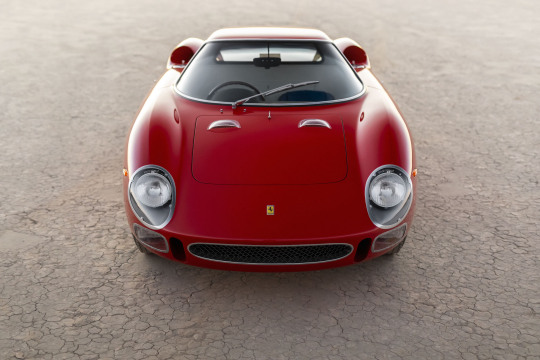


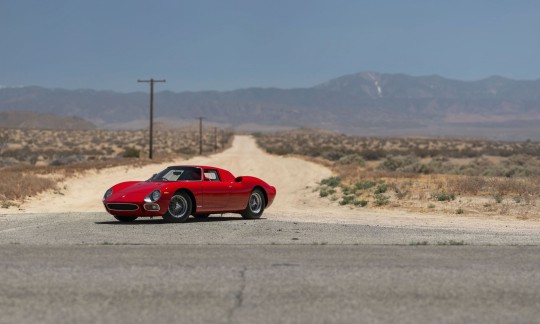
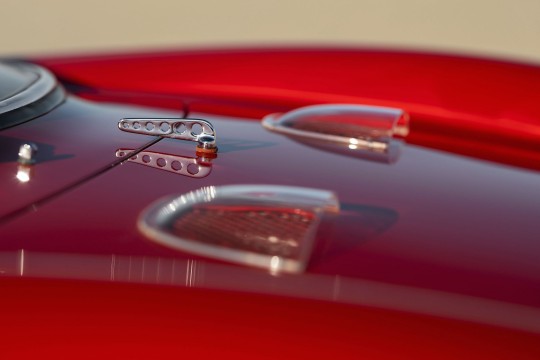
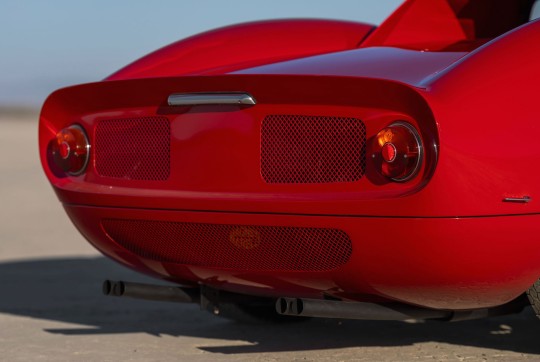

1964 Ferrari 250 LM by Scaglietti
Courtesy: RM Sotheby's
#art#design#supercars#luxurycars#supercar#luxurylifestyle#luxurycar#vintage cars#hypercars#hypercar#ferrari#ferrari 250 LM#rm sotheby's#1964#collectors#scaglietti
258 notes
·
View notes
Text

Ferrari 275 GTB/4 by Scaglietti 1960. - source RM Sotheby's.
102 notes
·
View notes
Text





Ferrari 365 GTS/4, 1971. The Daytona Spyder was first shown at the Frankfurt motor show in 1969 though they didn't go on sale until 1971. Apart from the initial prototype all 365 GTB and GTS models were made by Italian coachbuilder Scaglietti. Only 122 spyders left the factory though subsequently a number of berlinettas have been converted into spyder specifications by third parties. The original 122 factory GTS cars are always worth more than the conversions
289 notes
·
View notes
Photo

Ferrari 612 Scaglietti #classiccars #italia #italy #ferrari #scaglietti #ferrari612scaglietti https://www.instagram.com/p/CdjdNflMAQb/?igshid=NGJjMDIxMWI=
23 notes
·
View notes
Text

61 notes
·
View notes
